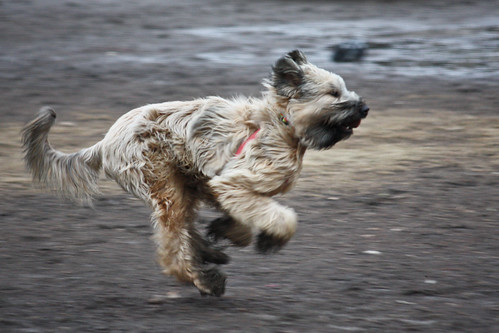This is the kind of thing I love to read about. I understand why amputation of the affected limb makes sense. But seriously, chopping off limbs doesn't really qualify as a treatment to me, sorry.
Whether amputation is a good option would also have to depend on which limb had been affected and overall condition of the dog.
That is because normally dogs carry about 60% – 65% of their weight on the front legs; and only 35% – 40% on the hind legs. You can see that the front bears much larger workload. This workload may even increase if there is an orthopedic issue in the hind legs, such as arthritis, bad hips or knees. That's why dogs with bad rear legs have such a broad shoulder appearance.
Jasmine's shoulders also got much wider during her orthopedic challenges. Now, with the hind legs functioning properly, the shoulders have returned to their normal proportion.
Dogs already suffering from arthritis, and have a hard enough time getting around as it is, could also suffer greatly from losing a limb.
That's why in some cases amputation simply isn't a good option.
Limb-sparing surgery is designed to remove cancer while avoiding amputation.
Only the diseased part of the bone is removed and replaced with a bone graft, or the remaining bone is re-grown (bone transport osteogenesis).
Now that is some seriously cool stuff.
Further reading:
Osteosarcoma (Canine)
Whether amputation is a good option would also have to depend on which limb had been affected and overall condition of the dog.
Removal of a front leg would be harder for a dog to cope with than losing a hind leg.
That is because normally dogs carry about 60% – 65% of their weight on the front legs; and only 35% – 40% on the hind legs. You can see that the front bears much larger workload. This workload may even increase if there is an orthopedic issue in the hind legs, such as arthritis, bad hips or knees. That's why dogs with bad rear legs have such a broad shoulder appearance.
Jasmine's shoulders also got much wider during her orthopedic challenges. Now, with the hind legs functioning properly, the shoulders have returned to their normal proportion.
Dogs already suffering from arthritis, and have a hard enough time getting around as it is, could also suffer greatly from losing a limb.
That's why in some cases amputation simply isn't a good option.
Limb-sparing surgery is designed to remove cancer while avoiding amputation.
Only the diseased part of the bone is removed and replaced with a bone graft, or the remaining bone is re-grown (bone transport osteogenesis).
Now that is some seriously cool stuff.
Further reading:
Osteosarcoma (Canine)

Comments
Post a Comment